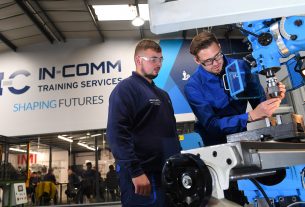Regionalisation and reshoring are key trends in manufacturing supply chains
The beginning of 2020 revealed the pain points of global supply chains. The problems posed by a lack of visibility across different nodes and overreliance on a single region were evident when the supply of mission-critical items started to dwindle. In light of that, how are manufacturers restructuring their supply chains? Here Neil Ballinger, head of EMEA at automation parts supplier EU Automation, discusses current trends.
Manufacturing misses home. A series of recent surveys investigating the long-term impact of COVID-19 on manufacturing supply chains, confirms that a shift to local sourcing and the willingness to reshore production dominate the agendas of many UK and US manufacturers.
The US publication Supply Digital Chain revealed that out of 878 professionals across the manufacturing and industrial sectors, 64 per cent were ready to move production and sourcing back to North America. However, the movement encouraging nations to bring offshore operations closer to home is not new. The Reshoring Initiative, a non-profit organisation, announced before the pandemic that between January 2010 and July 2016 more than 265,000 new manufacturing jobs were created in the US as a result of companies’ reshoring strategies.
The UK is experiencing a similar situation. The trade body Make UK found that 46 per cent of UK companies are planning to reshore at least part of their operations in the next two years. However, the 2019 Lloyds Bank report Business in Britain: Manufacturing, conducted for Reshoring UK, confirms that the industry’s eagerness to reshore is not just a consequence of the pandemic, but the exacerbation of processes that were long in the making.
The report, completed before the COVID-19 outbreak, highlighted several reasons for this approach. 71 per cent of those who planned to reshore operations were hoping to improve product quality and 41 per cent were trying to shorten the supply chain.
It seems that COVID-19 simply accelerated a phenomenon that started more than a decade ago, when the rising costs of labour and real estate in popular offshoring locations led manufacturers to reconsider the cost-effectiveness of their previous policies.
Homeward bound
Reshoring manufacturing processes is time-consuming and extremely complex from a financial and bureaucratic perspective. As a result, rather than embarking in huge reshoring initiatives, manufacturers are opting for more gradual steps to bring their operations closer to home.
The diversification of supply chains is a first step in the right direction. By eliminating overreliance on a single source, manufacturers can avoid a dangerous domino effect in case of disruption occurring at one vulnerable node of their extended supply chain.
For example, EU Automation has warehouses in four strategic locations — the UK, the US, Germany and Singapore — as well as a dense network of global suppliers and distributors. This ensures that we will be able to source and ship the parts our customers need as quickly as possible, helping them avoid or minimise downtime.
As well as diversifying your supply chain, it’s a good idea to add both regional and local companies to your list of approved suppliers. Sourcing locally can reduce the risk of disruptions in the supply chain impacting your business and helps reduce the cost of logistics.
Moreover, local suppliers can react more quickly to your requests than suppliers at the other end of the world, since coordinating shipments in the neighbouring regions is much easier than doing so for a remote destination. This means that if demand suddenly spikes, local sourcing gives you the best chance to cope with it.
Technology that helps
Diversifying your supply chain and adding local suppliers might not be enough. For true supply chain resilience, the keyword is visibility. Few manufacturers know what is happening across every tier of the supply chain, but having a more comprehensive picture of your supply chain can help reduce risks.
There are many platforms on the market to achieve end-to-end visibility and keep track of shipments. More advanced solutions provide extensive data not only on the location of your items, but also on the condition, such as temperature, humidity and much more. This can be essential for manufacturers in food and beverage or in the pharmaceutical sector, who have a responsibility to guarantee the quality of their raw materials across the whole supply chain.
For manufacturers who want to go one step further and move part of their production in-house, instead of sourcing components from offshore locations, cloud-based enterprise resource planning (ERP) is usually the answer.
Unlike on site solutions, cloud ERPs avoid the cost and hassle of hardware installation and management. Moreover, the cloud enables employee access regardless of location — it can be as simple as clicking a link. Another advantage of cloud-based solutions is that upgrades and fixes will be installed automatically as soon as they’re available.
Another way to increase in-house production capabilities is the implementation of additive manufacturing (AM) equipment. AM allows plants to produce a variety of components on site, where manufacturing was previously outsourced.
The cost, quality and complexity of AM are still a challenge, especially for small to medium manufacturers. Nevertheless, the versatility of this production method has made it particularly popular during the pandemic, when AM has allowed manufacturers to quickly produce emergency supplies such as test swabs, ventilator valves and much more.
With a variety of options and technologies available, the future looks bright for our homesick manufacturing. With a diverse and resilient supply chain, as well as increased in-house capabilities, manufacturers will be able to react to an increasingly unpredictable market and satisfy a larger, more demanding customer base.




